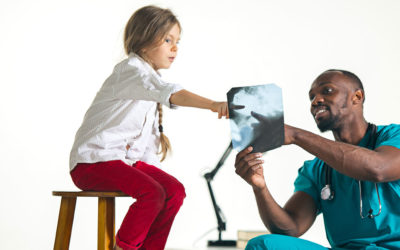Last week, we shadowed one of our medical scribes, Christina, and reviewed our specialty medical scribe training process. This week, she shares with us the general flow of the office visit.
With her extensive experience, Christina knows that specialties have their own tendencies and requirements, so there is no single model for how an office visit will transpire. “It widely varies between practices and specialties,” Christina sums up, “but the general flow goes as follows:
I generally enter the room with the physician and stay for the entire visit. As the patient discusses their concerns, I write the HPI (History of Present Illness) and ROS (Review of Systems). The physician would then perform the physical exam, and would dictate his/her findings. Finally, I listen to the plan as communicated to the patient and document accordingly. If they had any additional comments to add to their plan, those could be dictated after the visit is complete. If it is a particularly busy day and I am unable to finish the notes, the physician signs them at the end of the day.”
Christina takes a lot of satisfaction from scribing, and feels the experience has given her an advantage during her first year of medical school. “One of my favorite parts of scribing is seeing the visible relief in the physicians I worked with when they realized all of their charts were finished on time. Now, as I reach the end of my first year of medical school, I can confidently say that scribing has given me an immense advantage over my classmates who did not have the same opportunity. Being able to put concepts we learn in the classroom into a clinical context has been an invaluable tool.”
Christina, with an eye towards becoming a physician herself, sees that a physician utilizing a scribe offers an advantage for the patient as well. “I’ve found that the patients absolutely love having scribes. It removes the barrier of the computer between the doctor and patient, and allows for a more patient-focused visit instead of them concentrating on the charting. It’s incredible how a simple gesture like eye contact can change a patient’s perception of the visit. Moreover, with physician burnout at an all-time high, reducing the administrative load will allow them to do more of why they entered this career in the first place, to practice medicine and help patients.”




0 Comments